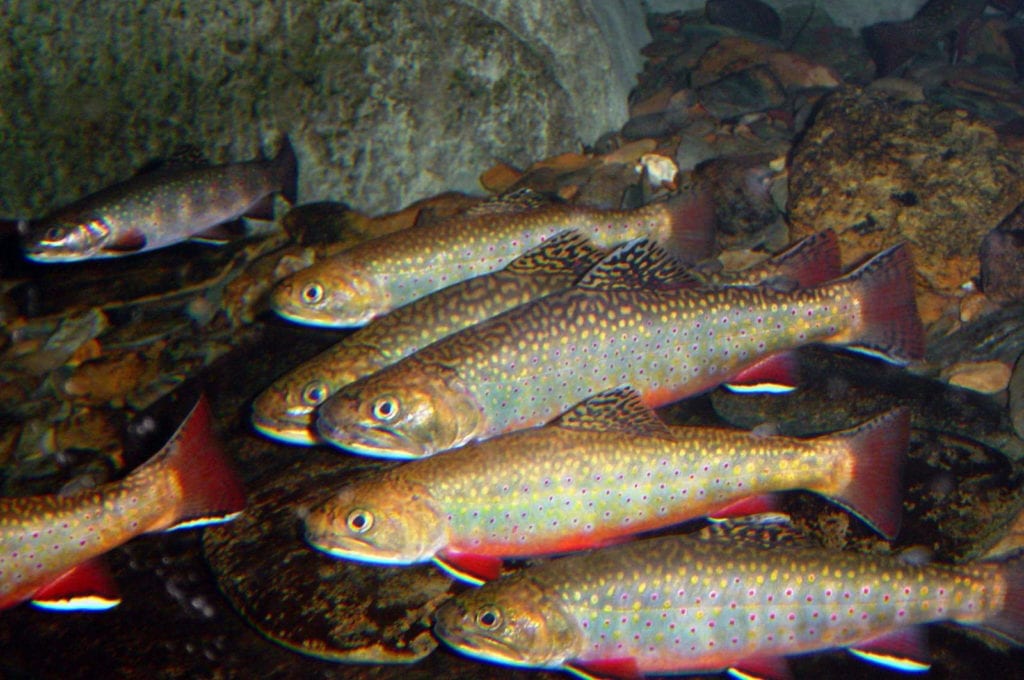
Maine Audubon has been hard at work with the Maine Department of Inland Fisheries and Wildlife (MDIFW), Trout Unlimited, and others to improve the way we manage our native brook trout and Arctic charr.
Maine’s native and wild brook trout and the lakes, ponds and flowing waters they depend on are a very special resource. Hundreds of Maine ponds and streams are home to these trout, which are extremely uncommon or already extirpated everywhere else in the United States.
Maine Audubon has worked with volunteer anglers around the state to find new, previously undocumented populations of brook trout in remote ponds and coastal streams to get an even better idea of where our wild trout are. Some of these ponds have been added to the Heritage Waters list. Heritage Waters contain self-sustaining populations of wild brook trout, Arctic charr or both; have never been stocked, or have not been stocked for at least 25 years; and do not allow stocking or the use of live fish bait. Currently there are 582 Heritage Waters designated in the state, and the play an important role in protecting our wild, native brook trout and Arctic charr.
To continue to improve the Heritage Waters program, MDIFW formed a Heritage Fish Working Group and discussions among the members (including Maine Audubon) and other stakeholders (including Trout Unlimited) led to: (1) an improved process for reviewing candidate lakes and ponds for inclusion on the Heritage List; and (2) a strategy to change “General Law” fishing rules in the northern zone to better protect brook trout, Arctic charr, and other native fish from the potential introduction of non-native bait fish.
If supported by the public, this approach would shift conservation of brook trout and Arctic charr from managing each pond in isolation from other ponds and streams, to a more comprehensive approach to protecting brook trout in the northern zone. This is important because fish need to move – between different sections of streams and between streams and ponds – to find the spawning, nursery, feeding, and summer deepwater pools and coldwater stretches they need to thrive. In the future, this will become even more important as our waters warm with a warming climate.
The Department’s proposal would continue to allow use of live baitfish on lakes and ponds open to use of live fish for bait during the ice fishing season, and on other waters where live fish is currently allowed as bait. You can read MDIFW’s press release on the initiative, and also the full report of the Working Group to the Maine Legislature.
We want to thank the Department of Inland Fisheries and Wildlife for their innovative approach to improving conservation of this nationally significant resource and hope you will join us in letting the Department know you support this initiative. The IFW legislative committee members have already voiced their support. The Department will be scheduling meetings in November or December to solicit feedback on this approach. We’ll provide details about those meetings when they are scheduled and hope you will be able to attend them or provide written comments.
If you’re interested in learning more or have questions, please contact Maine Audubon’s Sally Stockwell (sstockwell@maineaudubon.org or 207-221-8873) or Trout Unlimited’s Jeff Reardon (Jeffrey.Reardon@tu.org or 207-615-9200).
